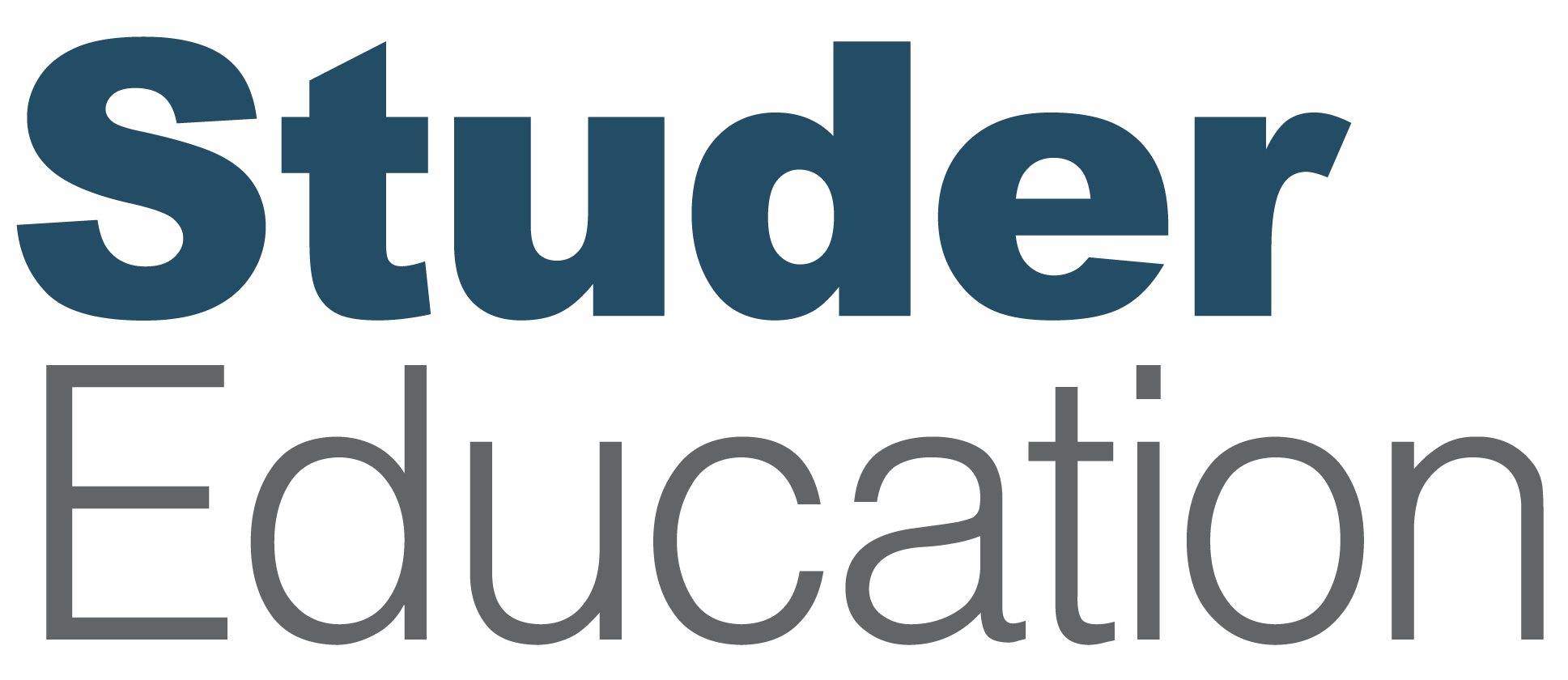
“Leaders as Great Coaches of Teams” Series, Part 5
Escape the reactive cycle and become a solutions-focused leader. Join Dr. Janet Pilcher as she returns for Part 2 of her interview with Dr. Holly Ellis. Listen as Janet reveals how a systems approach to leadership creates an engaged and productive work environment that tackles root causes and empowers teams to perform at their best. Continuing the discussion from Part 1, she also highlights the importance of leaders acting as both coaches and teammates.
This episode addresses questions such as:
- How do I move beyond a “band-aid” approach to problem-solving and address root causes within my organization?
- What does a systems approach to leadership look like in practice?
- What are the qualities of excellent leaders?
Recommended Resources
Latest Episodes
Janet Pilcher: At the end of the day, as leaders, it’s all about helping your teams be the best that they can be.
[Intro music plays in the background.]
Intro
Holly Ellis: Welcome to the Accelerate Your Performance podcast. I’m Dr. Holly Ellis, Director of Research and Instructional Content at Studer Education. Last week we did something a little different. Instead of Dr. Janet Pilcher, your usual host, interviewing a guest, I had the opportunity to interview her. I learned a lot, and I know you did too. If you missed that episode, I encourage you to go back and give it a listen. You’ll find the link in the show notes.
Today we’re wrapping up that conversation, and we’ll be building on insights from Janet’s recent interviews with Dr. Christi Barrett and Dr. Ryan Carpenter. We’ll also reflect on the valuable leadership lessons that Janet has learned throughout her career. So let’s get started.
Interview
Holly Ellis: So Janet, how do we help organizations move from a band-aid approach to solving problems to solving for the root issues?
Janet Pilcher: Yeah, so that seems like such an easy question and one to answer, but it really is a difficult process. And part of that process is people’s perceptions and how they come into the world. So I’m going to start with perceptions and then go to then how do we do that? How do we solve and what are some processes we use?
But it just reminded me of a real recent article. I thought this article was fascinating. It was an article about, and I don’t have any idea, like, how I read it or where I read it from, and I’m sorry about that, but it just fascinated me. But it was about a father who was talking about, he loved the movie Dead Poets Society and he wanted to watch it with kids, you know, so his middle high school kids.
And so they all watched it together and he was so excited about how they could have a conversation about it. And for those of you, just a quick snapshot, if you remember Dead Poets Society, if you watched it, the ending is Mr. Keating is the unconventional teacher. He was forced to leave the academy that he taught at after a student committed suicide that he worked with. And it was the pressure from his father and the school administrator then blame the teacher. And then there was a powerful scene at the end where all the students were influenced by Mr. Keating and they stand at their desk and they say, “oh, captain, my captain,” right?
And so anyway, the story line was tough. And so the kids were like, “Dad, like, why did you make us watch this? Like, this is a terrible thing for us to have to watch.” You know, the dad’s like all disappointed in this. And so the dad thought that by watching it together, they could analyze the individual actions and learn from them. And like to move through the emotions of the individual. And so rather than that occurring where he thought he could have that deep discussion with his kids, they looked at the perspective of that the system had wronged the individuals.
And so he’s like, “what? That’s not what I what I was trying to get.” You know, so they really focused in on the system and the wrong of the system. So my point in that is, there’s an individual perspective and a system perspective and those perceptions can be different. And so we have to untangle, tangle that. I think this story tells us an even more so today, because that was kind of generational in nature in a story, that we need to lead with an understanding as individuals, we are part of a system. But that’s not natural for us, Holly, because you think about how we’ve grown up and gone to work, you know, that we’ve gone to work. And, you know, we’ve said things like, “if we could just be left alone and do our work, we could get our work done,” right?
Janet Pilcher: Right.
Holly Ellis: You know, I mean, and so why do we have to be connected to the larger picture if I could just get my, my work done? And so that’s the systems piece, then becomes really important and how we look at those grassroots level problems, how we really engage people into those conversations and deeply connect them to their work, and really begin to solve those problems together.
So I just start there, because again, we could start with the “how to,” but the perceptions and the conceptual piece of how we enter that world becomes really important as we apply that “how to” and understanding how to move people out of their current perceptions into those perceptions that help us and act on that in ways that get us to a better outcome. I hope that made some type of sense there.
Holly Ellis: Yeah. And I really, if you’re okay with it, Janet, I’d like for us to spend some more time on that, because I think it’s really important and I don’t want us to lose the idea that you’re sharing about the individual and the systems focus. So can you spend a little bit more time going deeper into both of those? Because seeing how they’re not just trees, but they’re both part of a forest is important.
Janet Pilcher: Yeah. Yeah. So let’s let’s think about what we have normally done or people, they go to work, they go to work, I do my job, I do my job to the best of my ability, I get my job done. I’m in that small space of defined work. I go home every day and I come back and I do my job again and I do that over and over again.
And so a teacher can come in within his or her four walls and basically teach and just be kind of in their own world and not have to be associated with the larger system. A cafeteria worker can come in and basically do their job and just do their job. But what we know over time is that our satisfaction really declines if we’re continuing just to show up and do our job and not have any connection to that, to the work that we do each and every day.
And that systems approach really helps us help people have a deeper connection to the work. You know, I think in the type of environment– when problems arise in the type of environment where the individual is just showing up like that, we’re just reacting. So leader. and this is typical of what we’re accustomed to, leaders are just reacting to an issue and then they’re applying those band-aid solutions. So let’s blame somebody and then take an action off of blame. And it’s kind of like, Holly, I don’t know if you remember, but it’s the leaders are leading like, you know, when you you’d go in an arcade and you’d have that game and those heads would pop up and you had that hammer and you–
Holly Ellis: Whack-a-mole. [laughs]
Janet Pilcher: Whack-a-mole. Thank you. And you just whack-a-mole, whack-a-mole, whack-a-mole. And it’s almost like leadership feels like that like whack-a-mole. And then the more that you get into it, the faster it goes and to the point that you have lost control. So that’s why the systems approach becomes so important because we really then have a process and a system for engaging people in conversations about what’s important to them and how they can look at what’s occurring in front of them, solve the problems that they know, bring them into the solution to the problem, and get them to help execute to that and have continuous conversations and engagement to get to a better outcome. That’s a different way of building work and a work environment than just the whack-a-mole type of approach.
Holly Ellis: Right. So knowing that it looks different than what some folks might be accustomed to, how would you describe what it does look like, Janet? What does it look like when leaders focus on a systems approach?
Janet Pilcher: Yeah. So as we deeply connect people to their work, it’s like putting people that, as leaders, were connecting people to a bigger picture, putting pieces of the puzzle together. And we’re, and we think about what I go back to now, you know, a lot what Christi and Ryan, I mean, if you haven’t listened to those episodes, go back because if you want to see how they do what I’m talking about well, they are showing examples of that very specifically.
But we can take our survey, we can take a strategy, we connect culture and strategy at the same time. So it’s not just working on culture and it’s not just working on strategy. But as Christi and Ryan did, working on that systems approach really helps us build the connection between those two.
So if we have a survey and we’re doing our survey rollout process, then we’re rolling out the results. We’re looking at data. We’re asking what’s working and what’s not working, managing to the trends of that data. And then we’re asking our teams to give us input on what’s working, what’s not working, and where we can build the best action for improvement. Then we are following up and continuing to have those discussions about when we’re acting on the thing that’s most important to us, what’s working and what’s not working, and how do we continue to make those improvements.
So it’s that iterative cyclical process of conversation that really involves people in how we build those improvements in a way that’s most meaningful to me. So we’re not necessarily having to go in and say,” you have to change your mindset,” but we’re moving them into a systematic process that automatically moves them out of that individualistic approach to “I’m now engaged in a system of conversa–in the conversations that’s helping me understand that’s just the habit of practice, and I’m more satisfied connected, and I’m part, equally part as a teammate to achieve the outcomes that are most specific to what we’re trying to accomplish. I see how what I do matters and how I contribute to the whole.”
Holly Ellis: Yeah. And I loved the way they both talked about the voice. Now they may not have used that term, but they talked about everyone being represented and having a voice and sharing their voices part of that getting on board and and being part of the system, really. And I loved that and I think that that shows their strength and leadership, too.
Janet Pilcher: Yeah, and you heard Ryan say, you know, I loved his example of something that didn’t work, you know, I mean, when the bus schedule or the other starting schedule and, oh, well it caused another problem and then we had to, we had to do something different. Well, Ryan’s not making that decision. He’s engaging the teams and the people who are involved in doing that work each and every day into helping make those decisions, and he’s okay if something doesn’t work right away. They’re going to continue to learn and build those improvements. That’s the systems approach that then automatically moves them from an individual focus to what’s best for the students. What’s best for our families.
How do we make sure that we’re providing the right instruction in the right way that’s going to make our students become most successful? That’s what’s driving the conversation versus what’s most important to me. T
Holly Ellis: That’s right. Yeah. And, and remembering that it isn’t all about us and we don’t have all the answers makes us human.
Janet Pilcher: Yes.
Holly Ellis: So as we, if we think about the last question here Janet, it sort of brings us full circle with just being good leaders. So I often hear you talk about the conversations that you have with excellent leaders and all of the excellent leaders that you work with like Christi and Ryan. And in thinking about those conversations that you have with those types of leaders, what do those excellent leaders do well?
Janet Pilcher: Yeah, Holly, so many things. For sure in terms of the conversation we’ve had today, they’re, they’re a good coach to others. I think you could see that. You can see that in so many of the interviews, Holly, that we do on Accelerate Your Performance in the episodes, most specifically this month, this past month, you know, with Christi and Ryan. They’re a good coach to others and they want their teams to win, you know, they’re competitive in that way. They want their teams to win and, and they know they need to maximize their team’s human potential and human performance for that to occur. They set goals they develop their teams they place their teams in the field to play. They give them opportunities to practice and they continuously improve through those practice sessions and eventually they work toward achieving excellence and continue in that way.
I think that’s one thing. The other is they apply that systems approach to their work that deeply connects their teams to the work they do each day. The people, their employees, the people in their organization see how the dots connect and they see how they fit into the big picture and then kind of, by the way, their employee engagement scores usually continue to improve and are high because that’s what our teams really want in the long run.
And probably last, you know, they understand when to be a coach and when to be a teammate.
Holly Ellis: I love that.
Janet Pilcher: You know, they know how to manage the right amount of creative tension, which I’ve talked about before, you know, just that right amount of pressure, when to push and when to pull back to continuously strive for excellence. And, you know, by the way, everything I’ve just summarized is a description of an excellent teacher. I mean, we, most, many of us have been teachers and when we think about teaching, if we apply what we are talking about as leaders to our organizations, we can apply those same practices as teachers with our students. And that’s what’s, you know, what makes us good in the classroom.
And so that’s why, you know, when I look at what Ron Gallimore titled the book, he and Swen Nater about John Wooden, “You Haven’t Taught Until Students Have Learned.” I just moved that title a little bit and borrowed from it and have used the sentence of, “you haven’t led well until your teams have performed well.” And at the end of the day, as leaders, it’s all about helping your teams be the best that they can be. So I’ve been lucky to work with excellent leaders.
I learn every day from leaders in the field about the work that they do and in partnership with them, a good teammate with them, and sometimes a good coach. And sometimes they’re a good coach to me. And that’s the value of what we get an opportunity to do is to help people be the best that they can be and to, and for us to be the best that we can be for them.
Holly Ellis: Yeah, and what an honor Janet, what an awesome responsibility, but also what an awesome honor we have as colleagues and professionals and just humans is to try to be our best and help others be their best. So thank you for challenging us to be our best and for spending time today just talking to us about what leadership means to you and what you’ve learned.
Certainly, we all have things that we can walk away reflecting on and going back to what you were saying, thinking about how that affects us in growing and helping others grow. So thank you for your time today, Janet.
Janet Pilcher: Thank you, Holly. It’s been, been fun to be able to do this. It’s good to be reflective and to our listeners, I hope, you know, all of what we do with Accelerate Your Performance and the conversations that we have are helpful to you and always reach out to us if we can be of any type of service to you. Thanks, Holly.
Holly Ellis: Yep. Thank you, Janet.
[Outro music plays in the background.]
Holly Ellis: Thank you, Janet for sharing your reflections on leadership with us today. The importance of shifting from an individual focused approach to a systems focused approach can’t be overstated and a commitment to coaching is how we’re going to get there.
And listeners, if you’re enjoying this series on leaders as great coaches of teams, would you please let us know by leaving us a five star rating? Whether you’re on Apple podcasts, Spotify, or another app, hearing from you lets us know we’re delivering well, and we appreciate your feedback.
Next week, you’ll hear from Lori Phillips, an elementary school principal using the scorecard to drive everyday actions. Make sure you follow the show so you don’t miss it. Have a great week, everyone. And as Janet said, may we all go forward and lead our teams to be the best they can be.








